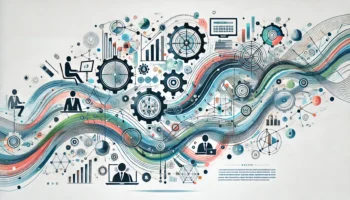Efficient workflows are the backbone of a well-organized office. They streamline processes, reduce errors, and enhance productivity, ultimately leading to a more effective and harmonious work environment. As an office manager, your role involves not only setting up these workflows but also continuously refining them to adapt to changing needs. Here’s how you can create and maintain efficient workflows in your office.
Understand Current Processes
Before you can improve workflows, you need to understand how things currently operate. Take the time to map out existing processes and identify any inefficiencies or bottlenecks. Engage with your team to get their input on what works well and what could be improved.
For example, if you notice that document approval is taking longer than necessary, observe the steps involved and consult with the team members who handle approvals. Their insights can help pinpoint specific areas where the workflow can be streamlined.
Define Clear Objectives
Efficient workflows start with clear objectives. Determine what you want to achieve with each workflow, whether it’s speeding up a process, reducing errors, or improving communication. Clear objectives will guide you in designing workflows that meet your goals and add value to your operations.
For instance, if your goal is to reduce the time it takes to onboard new employees, your objective might be to create a standardized onboarding process that includes all necessary steps and documentation.
Streamline Processes
Eliminate unnecessary steps and streamline processes to make them more efficient. Look for ways to automate repetitive tasks, reduce manual input, and simplify procedures. Automation tools, such as workflow management software, can help streamline tasks like document routing, approval processes, and task assignments.
If your invoice approval process involves multiple manual signatures, consider implementing an electronic approval system to speed up the process and reduce paperwork.
Standardize Procedures
Consistency is key to efficiency. Standardize procedures across your office to ensure that everyone follows the same process. Create clear guidelines and documentation for each workflow to provide a reference for your team. This helps maintain uniformity and minimizes confusion.
Develop standard operating procedures (SOPs) for common tasks, such as handling customer inquiries or processing expense reports. Ensure that these SOPs are easily accessible to all team members and regularly updated.
Use Technology Wisely
Technology can significantly enhance workflow efficiency. Invest in tools and software that automate tasks, facilitate communication, and provide real-time insights. Project management tools, task management apps, and document sharing platforms are just a few examples of technologies that can streamline your workflows.
For example, using a project management tool like Asana or Trello can help you track project progress, assign tasks, and collaborate with your team more effectively. Choose tools that align with your needs and integrate well with your existing systems.
Monitor and Adjust
Creating an efficient workflow is not a one-time task; it requires ongoing monitoring and adjustments. Regularly review workflows to identify areas for improvement and make necessary changes. Solicit feedback from your team and assess how well the workflows are meeting your objectives.
Conduct periodic reviews of your workflows to ensure they remain relevant and effective. If a workflow isn’t working as intended, analyze the issues and make adjustments as needed. Continuous improvement is key to maintaining efficiency.
Foster Team Collaboration
Efficient workflows depend on effective team collaboration. Encourage open communication and collaboration among team members to ensure that everyone is aligned and working towards common goals. Create opportunities for team members to share ideas and provide feedback on workflows.
Hold regular team meetings to discuss workflow-related issues, share updates, and brainstorm improvements. Collaborative problem-solving can lead to innovative solutions and enhance overall efficiency.
Provide Training and Support
Ensure that your team is well-trained and supported in using the workflows you implement. Provide training sessions, resources, and ongoing support to help team members adapt to new processes and tools.
Offer training on new software or procedures and provide clear documentation to assist team members in understanding and following workflows. Support their transition by being available to answer questions and address any challenges they may encounter.
By understanding current processes, defining clear objectives, streamlining and standardizing procedures, leveraging technology, monitoring and adjusting workflows, fostering team collaboration, and providing training and support, you can create and maintain efficient workflows that drive productivity and success in your office. Efficient workflows not only improve day-to-day operations but also contribute to a more organized and effective work environment.
